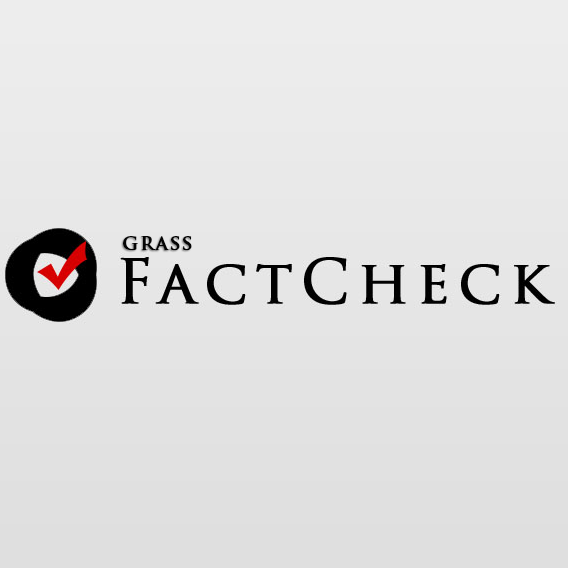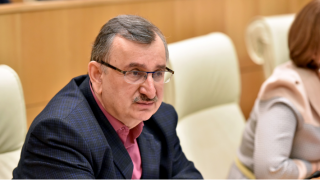Roman Gotsiridze: “Pensions have increased by just GEL 68 since 2012, adjusted for inflation.”
Verdict: FactCheck concludes that Roman Gotsiridze’s statement is HALF TRUE.
The pension for individuals under 67 years of age was GEL 110 and GEL 125 for those aged 67 and older as of September 2012 – prior to the change in government.Pensions were raised to GEL 350 for individuals under 70 and GEL 450 for those 70 and older at the beginning of January 2025. Additionally, a 20% supplement is applied in mountainous regions, raising these figures to GEL 420 and GEL 540, respectively.Consumer prices rose by 71% from January 2013 to June 2025. Adjusted to 2012 prices, the current GEL 350 pension is equivalent to GEL 205 whilst the GEL 450 pension equals GEL 263.The aforementioned implies that pensions increased by GEL 95 to GEL 138 in real terms for the majority of recipients, by GEL 80 for the smaller group aged 67-69 and by GEL 121 to GEL 191 for residents of mountainous regions.It should also be noted that the number of pension recipients has grown by 29% over the past 13 years – from 680,000 to 875,000. Pension spending as a share of total budget payments rose from 13.7% in 2012 to a planned 16.1% in 2025. Pension expenditures relative to the GDP also rose – from 3.8% to 4.5%.Whilst inflation has notably slowed the pace of real pension growth, the increase still amounts to GEL 95-138 in most cases, not GEL 68 as claimed. The respondent overstated the impact of inflation and overlooked key details – such as the fact that 28% of pensioners in 2012 received GEL 110 (not GEL 125) and more than half now receive GEL 450 in 2025, not GEL 350. Considering all the above, FactCheck concludes that Roman Gotsiridze’s statement is HALF TRUE.
Analysis
Member of the 10th convocation Parliament, Roman Gotsiridze, discussed pension growth during an appearance on BMG’s programme Tsertili (Point), stating (from 26:20): “The pension is GEL 350. Twelve years ago, it was GEL 125. Taking inflation into account, the real increase in pensions is GEL 68. And if you fact-check it – anyone can – prices have increased 1.8-fold, almost twice, so today’s pension is GEL 194 in 2012 prices. That means the Georgian Dream spent 12 years raising the pension from GEL 125 to GEL 194.”
The pension for persons under the age of 67 was GEL 110 as of 1 October 2012. This group accounted for 27.5% of all pensioners – around 188,000 people. The remaining 72.6% – approximately 493,000 individuals aged 67 and older – received a pension of GEL 125.
Pensions rose to GEL 350 for individuals under 70 and GEL 450 for those aged 70 and older from January 2025. The Social Service Agency reports that 47.4% of pension recipients (414,000 people) are under 70 whilst 52.6% (461,000 people) are 70 and older as of June 2025.
Consumer prices have increased by 71% since 2012 through June 2025. The current GEL 350 equals GEL 205 whilst GEL 450 equals GEL 263 in 2012 prices – resulting in a real increase of GEL 95 for younger recipients and GEL 138 for older pensioners.
There is a discrepancy between the age thresholds for higher pensions in 2012 and 2025. Individuals began receiving the higher pension at age 67 in 2012 whereas in 2025 that threshold is 70. If we compare the pension of a 67-69-year-old in 2012 (GEL 125) with the current pension for those under 70 (GEL 350), adjusted for inflation, the real increase amounts to GEL 80 – from GEL 125 to GEL 205 in 2012 prices. Whilst the 67-69 age group is no longer separately categorised today, they made up around 60,000 individuals – or 9% of all pensioners – in 2012.
Graph 1: Nominal and Real Pension Volumes
Source: Social Service Agency, National Statistics Office of Georgia
Whilst inflation has significantly dampened the real growth of pensions, the increase still exceeds the GEL 68 figure cited. Pensions have risen by GEL 80, GEL 95 and GEL 138 across different age groups when calculated in constant 2012 prices.
A 20% pension supplement has also been applied in mountainous regions since September 2016, raising pensions to GEL 420 and GEL 540 in current prices – or GEL 246 and GEL 316 in 2012 prices. A total of 85,000 pensioners, constituting 9.7% of all pension recipients, receive this supplement.
Graph 2: Nominal and Real Pension Volumes in Mountainous Regions
Source: Social Service Agency, National Statistics Office of Georgia
The real growth of pensions in mountainous regions is even higher when accounting for the regional supplement – amounting to GEL 121, GEL 136 and GEL 191 in constant 2012 prices, depending on the age category.
Roman Gotsiridze claimed that consumer prices have increased 1.8-fold or nearly doubled. However, official data shows that consumer prices have risen by 71% since 2012 – an increase of 1.7 times. Total inflation from 2013 to 2024, calculated from December to December, constituted 69% and rises to 76% when including data up to June 2025.
Pensioners, as low-income individuals, tend to spend a large share of their income on food. Whilst food and non-alcoholic beverages have increased by 109% since 2012, this was not mentioned in Mr Gotsiridze’s statement. Healthcare costs, also crucial for this demographic, rose by 73% over the same 12.5-year period – closely aligned with the average inflation rate.
Another important detail is the growth in the number of pension recipients. A total of 680,000 individuals received old-age pensions in September 2012 and by June 2025 this number had increased by 195,000 to reach 875,000 – a 29% rise. Whilst pensions have increased 3.2 to 3.6 times in nominal terms, budget spending on pensions grew at an even faster rate. Notably, GEL 82 million was allocated for monthly pension payments in September 2012; by June 2025, this figure had increased 4.3 times to GEL 352 million.
In total, pension expenditure amounted to GEL 1.068 billion in 2012. The 2025 state budget plans to allocate GEL 4.5 billion for pension provision.
Furthermore, pension spending constituted 13.7% of total expenditure in 2012, rising to a projected 16.1% in 2025. As a share of the GDP, pension expenditures increased from 3.8% to 4.5%.
Although inflation has significantly dampened the real growth rate of pensions, the actual increase remains well above GEL 68. A smaller group of pensioners aged 67-69 experienced a GEL 80 increase, whereas the majority experienced real growth of GEL 95 to GEL 138. The increase was even greater in mountainous regions where a 20% supplement applies. In addition to pension amounts, the number of recipients rose by 29% between 2013 and 2025. Pension spending has grown both as a share of the total budget expenditures and as a percentage of the GDP. Roman Gotsiridze overstated the extent of inflation and failed to note that 28% of pensioners in 2012 received GEL 110 – not GEL 125 – and that more than half of pensioners are set to receive GEL 450 in 2025 – not GEL 350. Considering all the above, FactCheck concludes that Roman Gotsiridze’s statement is HALF TRUE.








